Talk to a Registered Dietitian and use INSIDER20 for 20% off!
Talk to a real Dietitian for only $99: Schedule Now
Evidence Based Research To fulfill our commitment to bringing our audience accurate and insightful content, our expert writers and medical reviewers rely on carefully curated research.
Read Our Editorial Policy
The European Union, along with countries like Australia and the U.K., has banned a variety of foods deemed unsafe for consumption due to the health risks associated with certain ingredients these products contain.
Though the U.S. is a bit behind this trend, some states, such as California’s Food Safety Act, have taken steps to remove certain food additives independent of federal regulations.
However, by and large, there are still lots of products on the shelves of America’s grocery stores that we’d all be better off eating less of.
In this article, we’ll tell you all about the specific food products that are banned in other countries, as well as the ingredients that got them banned in the first place. This way, you can keep an eye out for these items on your next shopping trip.
Before we dive in, we just want to note that this list is not a hard and fast framework for how you, dear reader, should eat.
For the most part, these products and ingredients are only harmful if eaten frequently and in large quantities. You aren’t going to get brain cancer from eating one Little Debbie.
Rather, we at The Nutrition Insider hope this list simply helps you make more informed choices when you shop for food.
This list will focus primarily on American foods that are banned in other countries. This is primarily because American foods are so prolific and, thus, get a big spotlight shown on them.
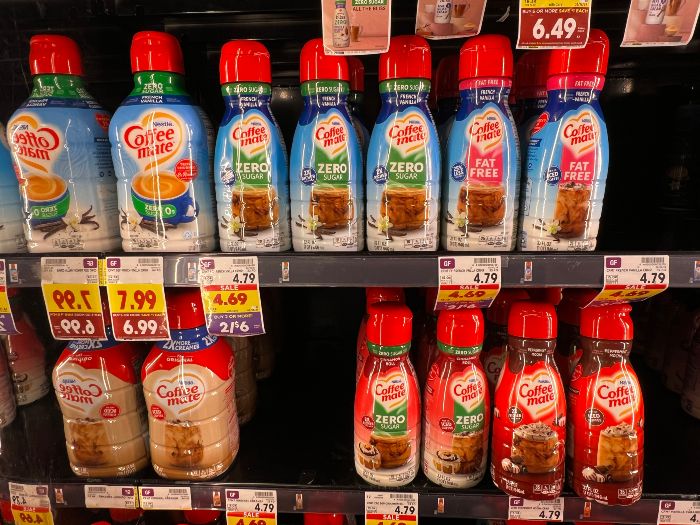
Where it’s banned:
Austria, Hungary, Iceland, Norway, Denmark
Why it’s banned:
Contains hydrogenated vegetable oils (including coconut, palm kernel, and soybean oil). Hydrogenated oils are the manufactured form of trans fats, which are known to both raise “bad” LDL cholesterol and lower “good” HDL cholesterol. This can lead to an increased risk of heart attack and stroke.
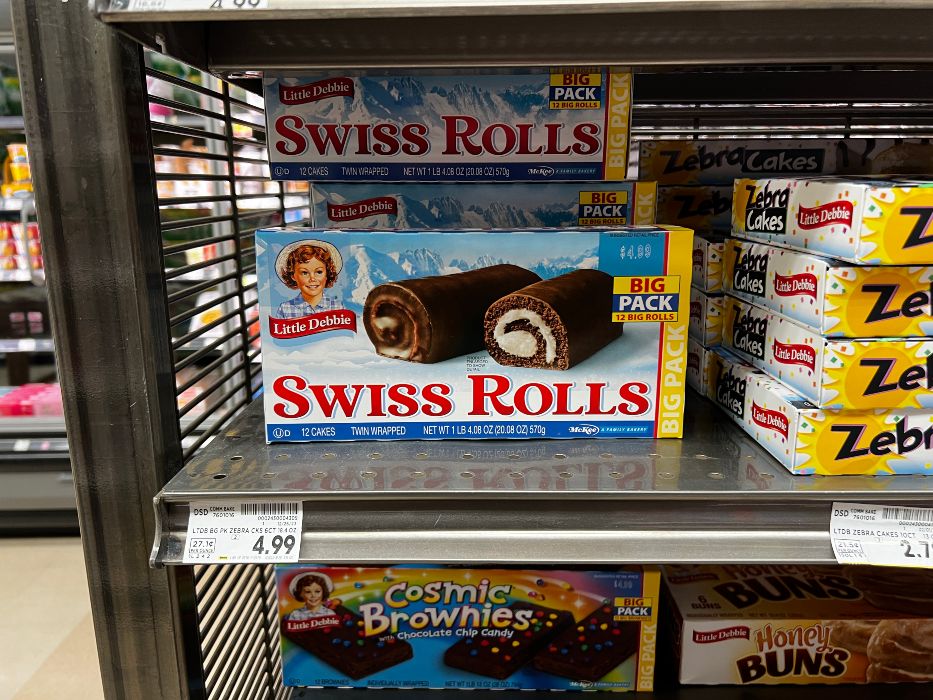
Where it’s banned:
Norway and Austria. In EU countries, the box must present a warning label.
Why it’s banned:
While you might have looked forward to these sweet chocolate-flavored rolls in your lunch or after school as a kid, these contain Red 40 and Yellow 5, which can have adverse effects on children. In the EU, products containing these dyes must carry a warning label, and they are not permitted to be used in food marketed towards infants and children.
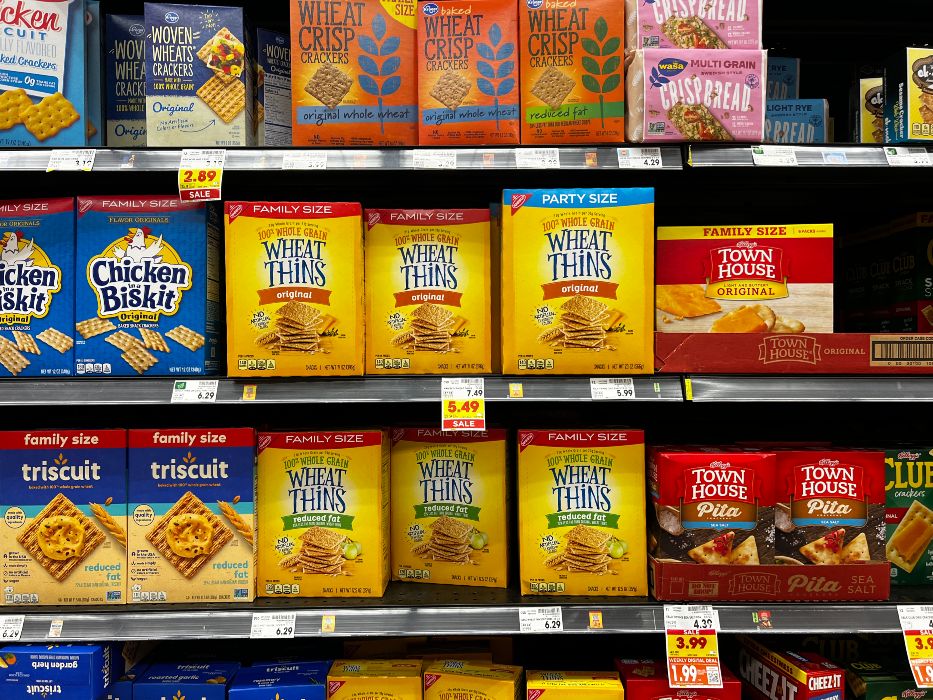
Where it’s banned:
The UK, Japan, and parts of Europe
Why it’s banned:
The plastic packaging that holds Wheat Thins crackers contains BHT (butylated hydroxytoluene). BHT is a chemical preservative that helps prevent vegetable oils from expiring. Apart from one rodent study, there is limited evidence that BHT is harmful to humans. Regardless, other countries strictly regulate its use in the food industry.
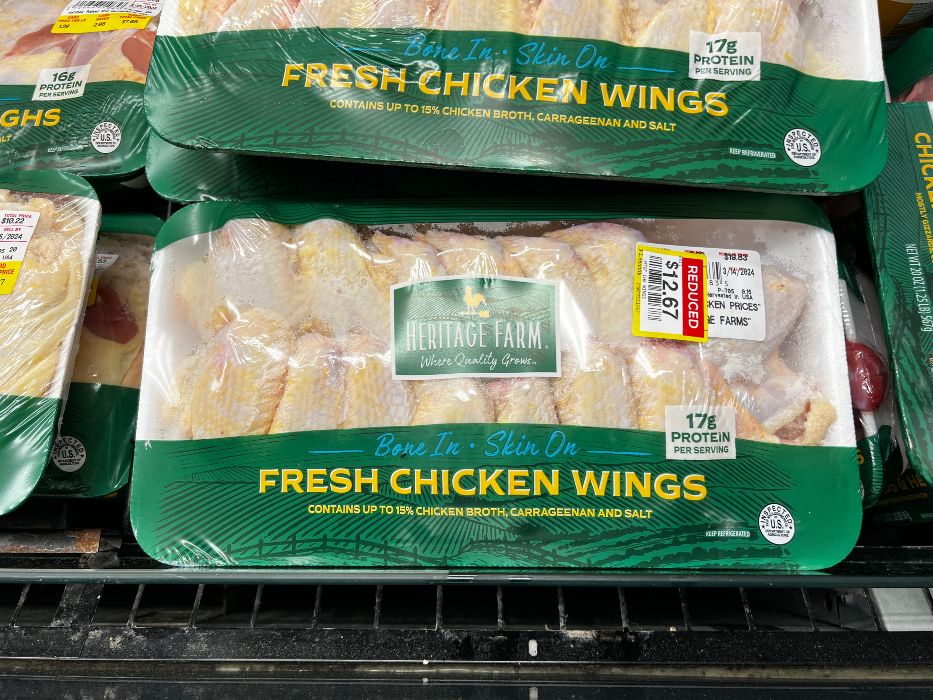
Where it’s banned:
The UK and the EU
Why it’s banned:
Chlorinated chicken uses an antimicrobial wash to remove harmful bacteria––such as salmonella and campylobacter––from the surface of harvested poultry. In the US, this is used to protect consumers from infections. Chlorinated poultry is banned in the UK and EU because regulatory bodies believe these chemical washes are a way to circumvent the use of more hygienic farming practices. By only allowing processing facilities to use cold air and water to wash and decontaminate poultry, it’s believed that consumers are more well protected.

Where it’s banned:
Canada, the EU, Japan, and Australia
Why it’s banned:
The use of growth hormones is prolific throughout the US dairy industry. However, countries outside the US recognize that hormones like rBGH (recombinant Bovine Growth Hormone) or rBST (bovine somatotropin)––used to increase milk production in dairy cows––are harmful to the welfare of animals and may have negative health impacts on consumers, too.
These growth hormones can cause painful side effects in animals including mastitis, a bacterial udder infection. This results in farmers using more antibiotics, which can increase antibiotic resistance among dairy cows and, subsequently, the people who consume that dairy.
Additionally, the Codex Alimentarius, the UN body that sets global food safety standards, was unable to come to a consensus on its approval three times. However, the use of rBGH and rBST is only banned on animals produced in the EU, meaning that countries can still import dairy products from the US.Certain chocolate milk products containing carrageenan are also banned. Carrageenan is an emulsifying agent banned in other countries due to its links to heart disease, Parkinson’s, and Alzheimer’s disease.
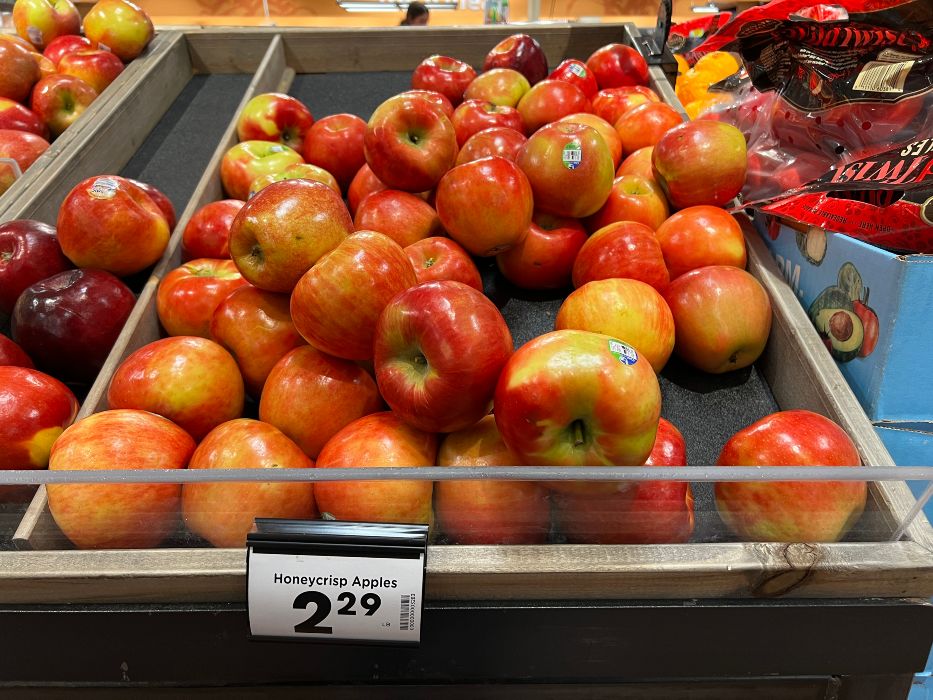
Where it’s banned:
The EU
Why it’s banned:
Non-organic American apples are coated in a wax that contains diphenylamine (DPA), a pesticide banned in the EU. The purpose of this chemical wax is to improve the appearance of apples, making them more appealing to consumers, as well as preventing them from browning. While there is little evidence that DPA poses a risk to consumers, the chemical producers were unable to answer questions posed by the European Commission. This led to an outright ban on the chemical.
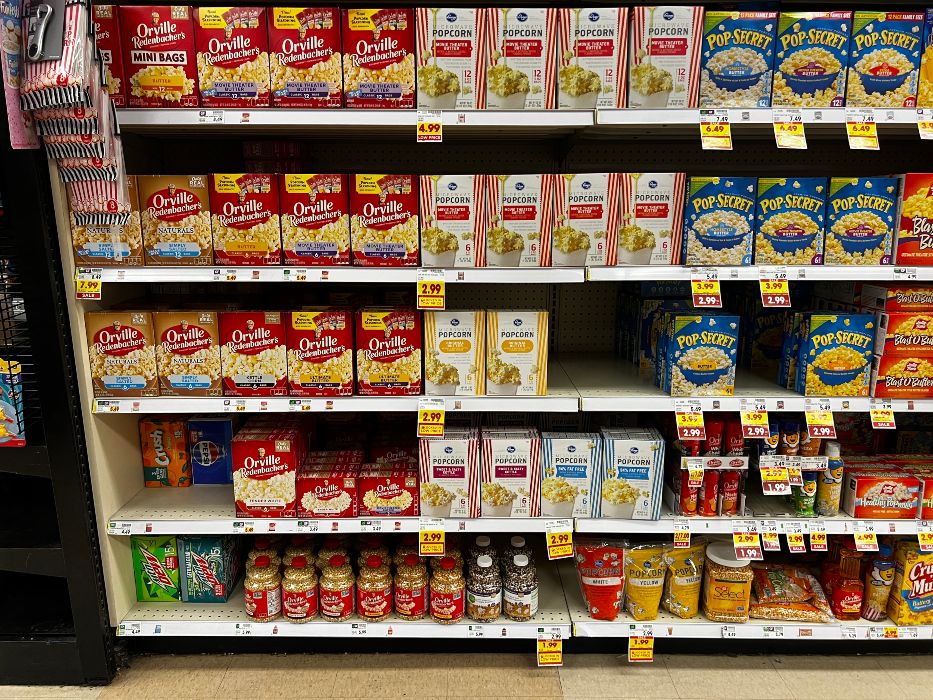
Where it’s banned:
None
Why it’s banned:
One food that has made its rounds on many lists claiming to be “banned” from other countries is microwave popcorn. Yes, microwave popcorn that contains butter flavorings was and still is a pretty unhealthy snack. This is for a few reasons. Until recently, microwave popcorn contained a compound called diacetyl, and the packaging was made with perfluorinated compounds (PFCs). These two compounds are linked to a variety of health issues, including “popcorn lung” and cancer.
The reason why it’s often claimed that other countries ban microwave popcorn is because Denmark banned the use of PFCs. So, microwave popcorn companies that wanted to sell to snack-ish Danes would have to make popcorn bags without PFCs. Today, the major US producers of microwave popcorn no longer use diacetyl or PFCs in their products, so this is no longer a concern.
That being said, microwave popcorn does contain high levels of saturated fats and sodium, making it a snack you should avoid consuming regularly.
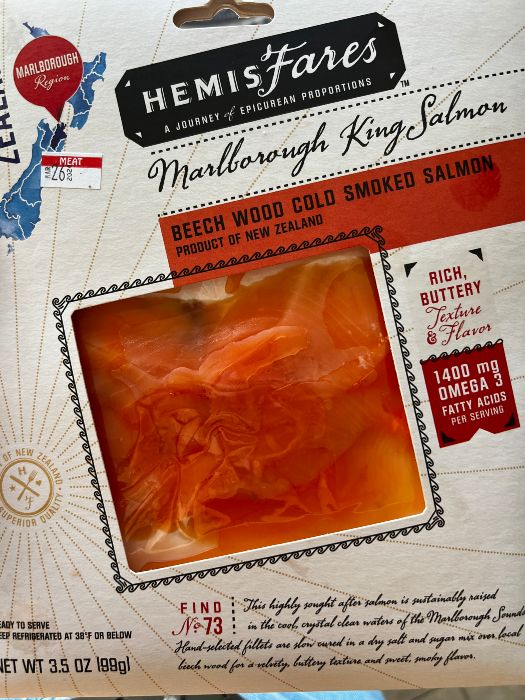
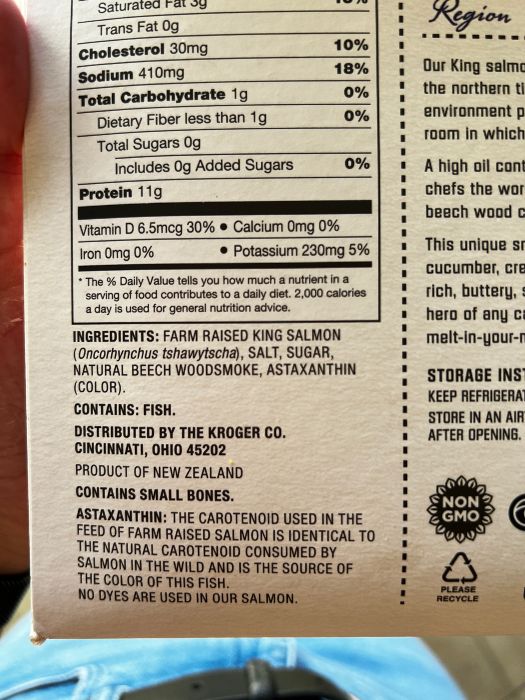
Where it’s banned:
Australia, New Zealand, Argentina, and the EU
Why it’s banned:
America has been a pioneer for farm-raised salmon, and today the same methods used in the US are now being implemented worldwide. Unfortunately, this industry is rife with health concerns for both the salmon and the consumers who eventually eat them.
The reality is that farm-raised salmon are kept in large numbers in too-small pens, which leads to a variety of health issues, including rampant bacterial infections and parasites. In addition, the salmon are not fed a diet similar to what they would consume in the wild. Instead, they are fed grains mixed with chemicals such as astaxanthin to help simulate the vibrant pink color wild salmon have. Antibiotics are also used to prevent diseases.
Though the natural version of astaxanthin is a beneficial compound for humans and a highly powerful antioxidant, the same cannot yet be said for the synthetic version. The synthetic version of astaxanthin is banned from use in the EU, Australia, and New Zealand. This is primarily out of an abundance of caution since, currently, there is little evidence to support the claims that this chemical is harmful.
However, this doesn’t mean farm-raised salmon should get the green light. There is also a sustainability component to consider since the existence of salmon farms can heavily impact local waters. This is one of the reasons why Argentina has banned intensive salmon farming.
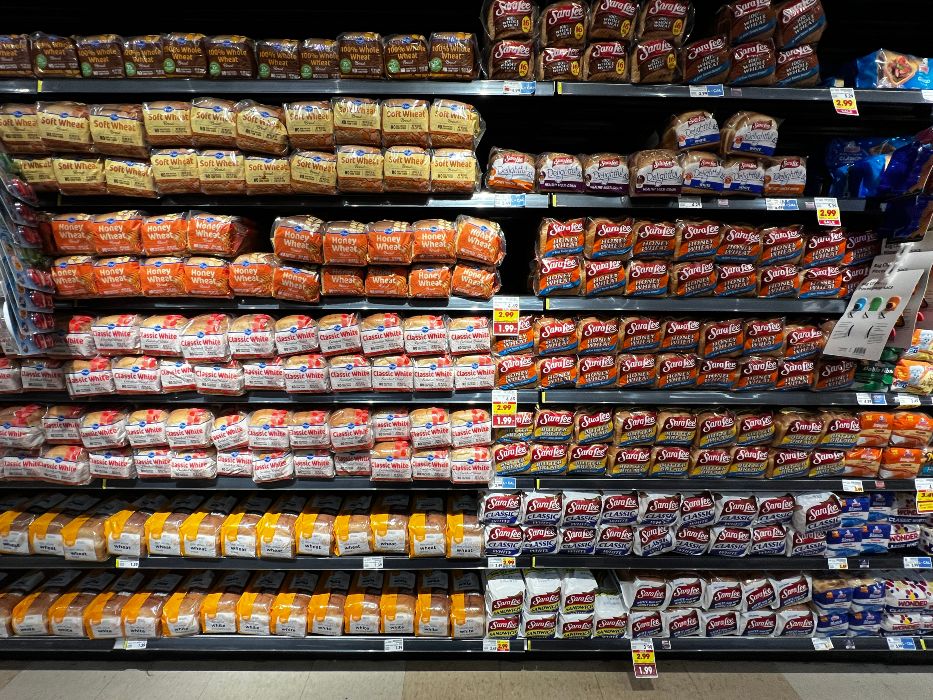
Where it’s banned:
Europe, Canada, India, Nigeria, Brazil, Argentina, South Korea, Peru, China, Sri Lanka, and California (in 2027)
Why it’s banned:
Whew! That is the longest list of countries on this list yet. So what’s the big deal? Well, there are a few pesky chemicals responsible: potassium bromate, azodicarbonimide (ACA), BHA, and BHT.
Potassium bromate was once prolifically used in bread products––everything from bagel chips to bread crumbs––as an oxidizer to help bread rise. After 50 years of research, scientists have discovered that this chemical is linked to various health issues, including cancer, thyroid disease, kidney damage, gut irritation, reproductive abnormalities, renal cancer, toxicity, oxidative stress, genotoxicity, hearing loss, neurobehavioral changes, and disruption of mitochondrial distribution.
That all sounds pretty bad, right? Maybe even bad enough to outright be banned by the US FDA? Though we think so, the FDA doesn’t agree. Despite it being recognized as a potential human carcinogen by the IARC (International Agency for Research on Cancer), it is still permitted to be used in the US food supply.
Azodicarbonamide (ACA) is a chemical used in bread as a dough conditioner and bleaching agent. When baked, ACA has been linked to cancer in laboratory animals. While several countries, including members of the European Union, China, and Brazil, have banned ACA for consumption, the U.S. FDA still considers it “generally recognized as safe” (GRAS).
Finally, we have BHA (butylated hydroxyanisole) and BHT (butylated hydroxytoluene). These are two preservatives often used in baked goods in the US as emulsifiers that prevent fats and oils from spoiling. The EU has imposed strong restrictions on these preservatives, and the IARC suggests there is sufficient evidence demonstrating their carcinogenic potential in animal studies.
The FDA also still classifies these preservatives as GRAS (generally recognized as safe) and permits their use. Their argument is that these chemicals are used in such small quantities that they would not affect humans. The critics’ reply to this is that they do not want any amount of carcinogenic ingredients in their food, no matter how minute. We tend to agree with the critics here, and we definitely recommend checking the ingredients list for these items.
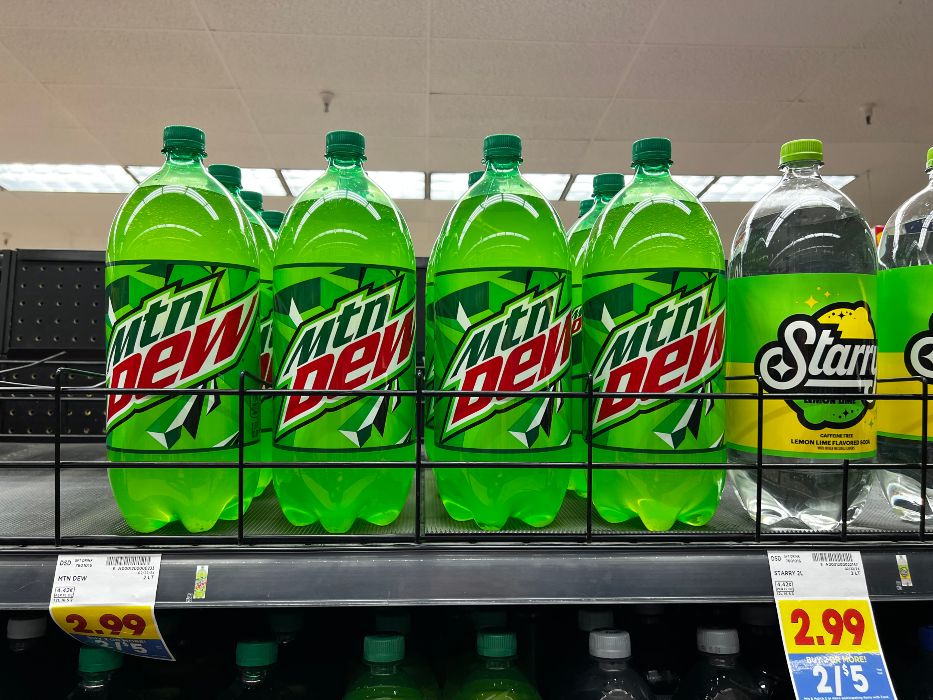
Where it’s banned:
The UK, India, Japan, and California (in 2027)
Why it’s banned:
Mountain Dew once contained an ingredient called brominated vegetable oil (BVO). Today, it no longer uses this compound, so it’s not banned anymore. However, some products may still contain it so it’s worth a mention on this list.
BVO is a modified vegetable oil made with bromine. It is primarily used in drink products––such as Mountain Dew––to prevent the separation of citrus flavorings in sodas and juice drinks. Decades of studies show strong adverse health effects linked to BVO, which has finally led the FDA to propose revoking its authorization for use in American food and beverages.
What does BVO do, though? Well, it leaves bromine residues in body fat and organs, which can cause bromine toxicity along with neurological effects.
Many major brands have phased out BVO, but it can still be found in some products. If the FDA passes its new proposed rule, this may prompt reformulation by beverage companies. For now, check labels for products that could potentially contain BVO.
Some foods are banned in other countries due to health risks associated with certain ingredients they contain. While many ingredients do not explicitly have science-backed evidence that they cause harm to humans, many countries impose these bans out of an abundance of caution. This is to ensure the safety and well-being of citizens by removing potentially harmful products from the food supply.
Several ingredients are allowed in the US but banned in other countries. Examples include hydrogenated vegetable oils in Coffee Mate and certain food dyes like Red 40 and Yellow 5 in Little Debbie Swiss Rolls. Potassium bromate, azodicarbonamide (ACA), BHA, and BHT are all also permitted to be used in US food products despite evidence that they could be carcinogenic to humans.
Generally, it is recommended to avoid frequently consuming products with the following ingredients:
• hydrogenated vegetable oils (trans fats)
• artificial food dyes (Red 40 and Yellow 5)
• growth hormones (rBGH and rBST)
• chlorinated chicken
• diphenylamine (DPA)
• carrageenan
• potassium bromate
• azodicarbonamide (ACA)
• preservatives BHA and BHT